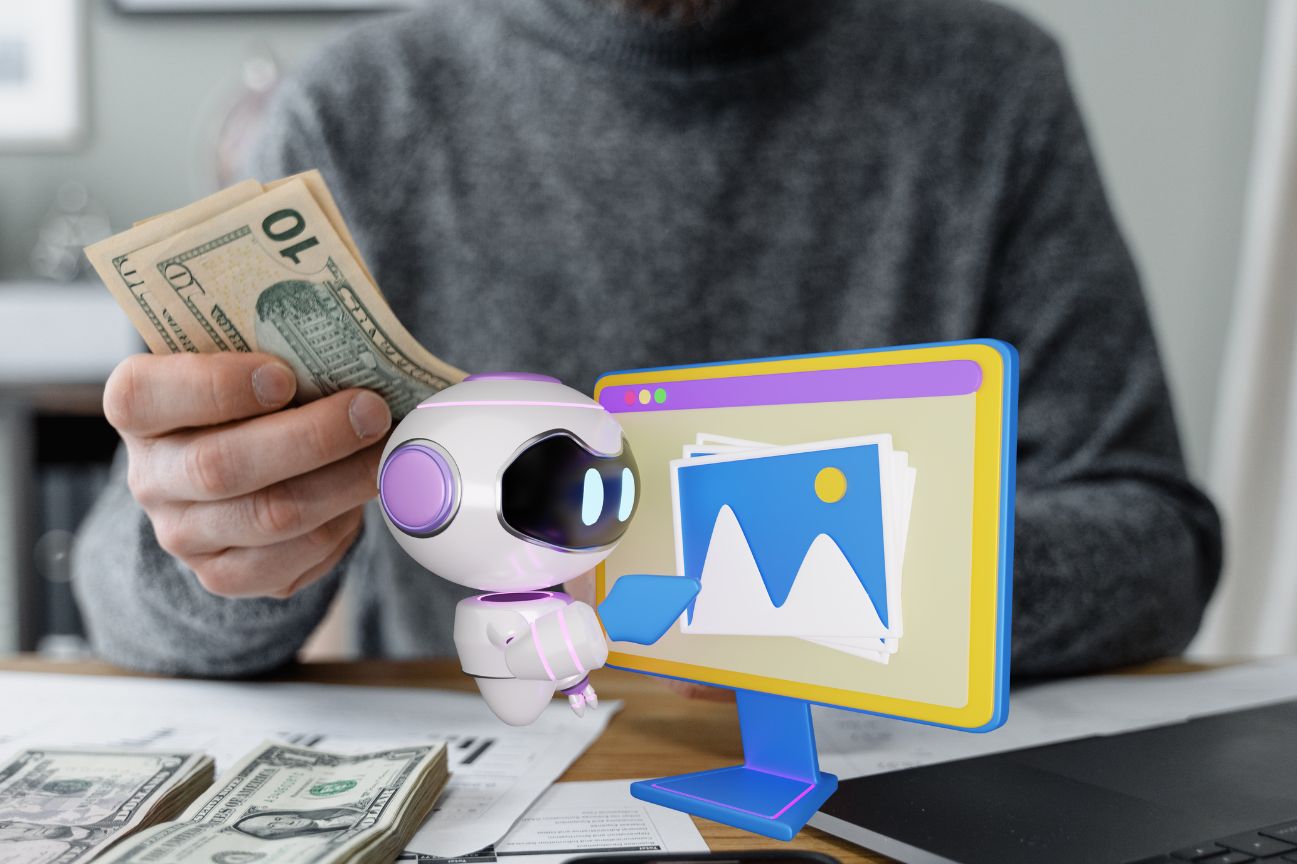Ever wondered what those mesmerizing AI-generated images are and how people make them? Even more intriguing, how do they make money from them? Well, you’re in for a treat. AI images are becoming the next big thing in the creative world, blending technology with art in fascinating ways. In this article, we’ll dive into how you can create these stunning AI images and turn your hobby into a profitable venture.
Understanding AI Image Creation
Definition of AI Image Creation: AI image creation involves using artificial intelligence to generate, modify, or enhance images. The technology leverages machine learning models, such as Generative Adversarial Networks (GANs), to produce visuals that range from abstract art to photorealistic pictures.
Key Technologies Used: The backbone of AI image creation lies in deep learning and GANs. These technologies enable machines to learn from vast datasets and generate new images based on learned patterns. Think of it as teaching a child to draw by showing them thousands of pictures.
Popular Tools and Software
There are several tools at your disposal, such as:
- DALL-E: Known for its ability to generate highly creative images from textual descriptions.
- MidJourney: A popular choice for artists looking to create unique and artistic visuals.
- Artbreeder: Allows for the blending of different images to create entirely new ones.
Getting Started with AI Image Design
Choosing the Right Software
Selecting the right tool is crucial. If you’re just starting, platforms like Artbreeder and MidJourney are user-friendly and don’t require extensive technical knowledge.
Basic Skills Required
While advanced coding skills aren’t mandatory, a basic understanding of concepts like neural networks and image processing can be beneficial. Familiarity with graphic design principles also helps.
Resources for Learning
To get up to speed, numerous online courses and tutorials are available. Websites like Coursera, Udemy, and YouTube offer valuable content to help you learn at your own pace.
Step-by-Step Guide to Creating AI Images
Conceptualizing Your Image
Start with a clear idea. Whether it’s an abstract concept or a specific scene, having a vision will guide your design process.
Selecting a Tool
Choose a tool that suits your needs. For instance, use DALL-E for creative, text-based prompts or MidJourney for more artistic outputs.
Designing the Image
Input your concepts and let the AI generate initial drafts. Don’t hesitate to experiment with different inputs to see varied results.
Refining and Editing
Once you have a base image, use editing tools to refine and perfect your creation. Tools like Photoshop can help enhance details and add finishing touches.
Advanced Techniques in AI Image Design
Using Neural Style Transfer
This technique allows you to apply the style of one image to another, creating unique blends of artistic styles.
Creating Complex Compositions
Combine multiple AI-generated images to create intricate compositions. Layering and blending can result in visually stunning pieces.
Enhancing Realism
Focus on details like lighting, textures, and colors to enhance the realism of your images. AI tools often allow fine-tuning to achieve the desired effect.
Identifying Your Target Audience
Who are your images for? Whether it’s art collectors, businesses, or casual buyers, knowing your audience helps tailor your marketing efforts.
Building a Portfolio
Showcase your best work. A well-curated portfolio on platforms like Behance or your own website can attract potential buyers.
Utilizing Social Media
Leverage social media to reach a wider audience. Platforms like Instagram and Pinterest are great for visual content, while LinkedIn can connect you with professional clients.
Selling AI Images Online
Consider selling on:
- Etsy: Great for handmade and unique digital art.
- Shutterstock: Ideal for stock images.
- Your own website: Offers more control and direct profit.
Pricing Strategies
Price your work competitively. Consider factors like time invested, complexity, and market demand. Offering various pricing tiers can attract different buyers.
Licensing and Copyright Considerations
Ensure your work is protected. Understand the basics of licensing and copyright to prevent misuse and ensure you get paid for your creations.
Creating a Passive Income Stream with AI Images
Print on Demand Services
Services like Redbubble and Society6 allow you to sell prints, apparel, and other merchandise featuring your AI images.
Stock Photo Websites
Upload your images to stock photo websites and earn royalties every time someone downloads them.
Subscription Models
Offer exclusive content to subscribers on platforms like Patreon. This ensures a steady income stream and builds a loyal following.
Challenges in AI Image Design
Ethical Considerations: AI art raises ethical questions about originality and the use of datasets. Always aim for ethical use of resources and respect for intellectual property.
Copyright Issues: Navigating copyright can be tricky. Ensure your creations don’t infringe on existing works and that you have the rights to any used materials.
Staying Updated with Technology
AI is a fast-evolving field. Regularly update your skills and tools to stay competitive and innovative.
Future of AI Image Creation
Trends to Watch: Keep an eye on trends like interactive AI art and virtual reality integrations. These areas are expanding and offer new opportunities for creativity.
Potential Innovations: Expect advancements in AI that make tools even more accessible and powerful. Innovations may include more intuitive interfaces and higher-quality outputs.
How to Stay Ahead: Continual learning is key. Follow industry news, join communities, and keep experimenting with new tools and techniques.
Case Studies of Successful AI Image Designers
Profiles of Top Creators: Look at successful AI image designers like Mario Klingemann and Helena Sarin. Their innovative approaches can provide inspiration.
Strategies They Use: Common strategies include a strong online presence, consistent practice, and staying ahead of trends.
Lessons Learned: Learning from others’ experiences can help you avoid common pitfalls and find your unique path in AI image design.
Tools and Resources for AI Image Designers
Best Software and Apps: In addition to DALL-E and MidJourney, consider tools like Runway ML and DeepArt for diverse capabilities.
Online Courses and Tutorials: Websites like Skillshare and LinkedIn Learning offer specialized courses to hone your skills.
Communities and Forums: Join forums and online communities such as Reddit’s r/deepdream or the AI Art Global group on Facebook to share your work and get feedback.
Balancing Creativity and Commercial Viability
Finding Your Niche: Whether it’s fantasy art, realistic portraits, or abstract designs, finding your niche helps you stand out.
Balancing Artistic Vision with Market Demand: While staying true to your style, pay attention to market trends and what buyers are looking for.
Examples of Successful Projects: Look at projects that balance creativity with commercial appeal, such as AI-generated album covers or digital prints.
Legal Aspects of AI Image Design Understanding Copyright Laws
Know your rights as an artist. Understanding copyright laws can help protect your work from unauthorized use.
Protecting Your Work
Consider watermarking your images and using copyright notices to deter theft.
Dealing with Infringements
If someone uses your work without permission, be prepared to take action, whether through legal means or negotiation.
Conclusion
Creating and selling AI images is a thrilling and potentially profitable endeavor. With the right tools, skills, and marketing strategies, you can turn your creative passion into a lucrative business. So why wait? Start exploring the world of AI image design today and see where your creativity takes you.
FAQs
What is AI image creation?
AI image creation involves using artificial intelligence to generate or enhance images, often using technologies like GANs and deep learning.
How can I start making AI images?
Begin by choosing user-friendly software, learning basic concepts, and experimenting with different tools and techniques.
Where can I sell my AI images?
Platforms like Etsy, Shutterstock, and your own website are great places to sell your AI-generated art.
Are there ethical concerns with AI art?
Yes, ethical considerations include originality, use of datasets, and respecting intellectual property.
How can I protect my AI images?
Use copyright notices, watermark your work, and understand your rights to protect your creations.


